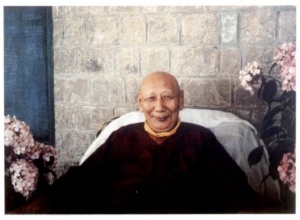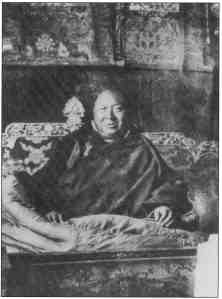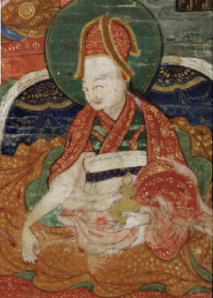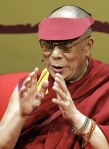The Dalai Lama is a man revered by nearly the whole world, but surely we are free to ask for clarification when we see blatant contradictions in his words and behaviors?
It seems that people are so desperate to believe that this man is a great being that there immediately develops an air of hysteria should anyone try to investigate or critisize his actions. It is time to realize that the Dharma is still the Dharma even if one very popular political leader is not a perfect practitioner. If the Dharma is to survive in this world, we need to be able to take an honest look at how it is being represented and promoted in the world. Especially when the use of political power to enforce a sectarian agenda is involved.
There are many non-political spiritual guides teaching the pure Dharma of the Nyingma, Sakya and Kagyu traditions, as well as the Ganden tradition of Je Tsongkhapa. If we rely on our teachers and forget worldly motivations, the Dharma will thrive here in the west and throughout the world.
I am interested to see if anyone can explain this one to me. Here are the Dalai Lama’s own words…
“Anyway, Ling Rinpoche’s opposition to me receiving the transmission of that Tantra was based upon his fear of Dolgyal. Therefore, what happened was that though I wanted to take that Tantra, because of someone’s fear of Dolgyal, I was unable to. My rights to freedom of religious choice were thus violated.”
-The Dalai Lama, Second Gelug Conference , Dharamsala, 6 December 2000
So the Dalai Lama is here claiming that his Tantric spiritual guide was afraid of “Dolgyal,” a pejorative way of referring to Dorje Shugden.
“When I generate faith in the precious Dharma, I generate real faith in the precious Buddha. And I also have genuine faith in the qualified followers of the Buddha. The statement that if you have pure refuge, you will not be harmed either by humans or non-humans, is definitive.”
– A talk on Dholgyal by H.H. the Dalai Lama , Dharamsala, October 1997
Any yet here, the Dalai Lama is saying that someone with Refuge has no need to fear spirits. So what is he saying? That Ling Rinpoche doesn’t understand this? Why would Ling Rinpoche be afraid of “Dolgyal?”
In his book Confessions of a Buddhist Atheist, Stephen Batchelor recounts an interesting story about Ling Rinpoche…
“Shortly before I left Dharamsala, Ani Jampa, an English Buddhist nun, asked me to translate for her in an interview with Ling Rinpoche, the senior Tutor of the Dalai Lama. She explained to Rinpoche that she would shortly be leaving India to visit other countries in Asia and asked if he could provide her with a Sung-du– a knotted protection string- to ward off the influence of harmful spirits. Ling Rinpoche chuckled and said that all she needed to do was to take refuge in the Buddha, Dharma and Sangha (community). If she sincerely entrusted herself to these three guiding principles, which are commitments common to all Buddhists, that would be sufficient to protect her against whatever harmful influences she might encounter.”
-Batchelor, 2010, Pg 209
So, obviously, Ling Rinpoche was not afraid of “Dolgyal,” something that would be immediately obvious to anyone who knows who this lama was. Moreover, Ling Rinpoche was incredibly devoted to his root guru, the renowned lama Pabongka Rinpoche, whose main protector was Dorje Shugden. There can be no question that he never feared the protector of his own spiritual guide, who he loved and revered. It seems the Dalai Lama is setting a new precedent for relating to one’s Guru, a tradition in a style not seen before in the Vajrayana.
So what are we left to conclude? The Dalai Lama says Ling Rinpoche was afraid of spirits. It seems that either Dalai Lama is lying, or he sincerely believed that his own spiritual guide had no refuge, and therefore is not even a Buddhist. Either way, it is not a pretty picture.
Is there something I am missing here? Is there another conclusion? We all want to see the Dalai Lama as a great man, but how can we, as honest and sincere spiritual practitioners, understand this behavior?
Please feel free to comment, and as always, scholars and yogis, please check.











